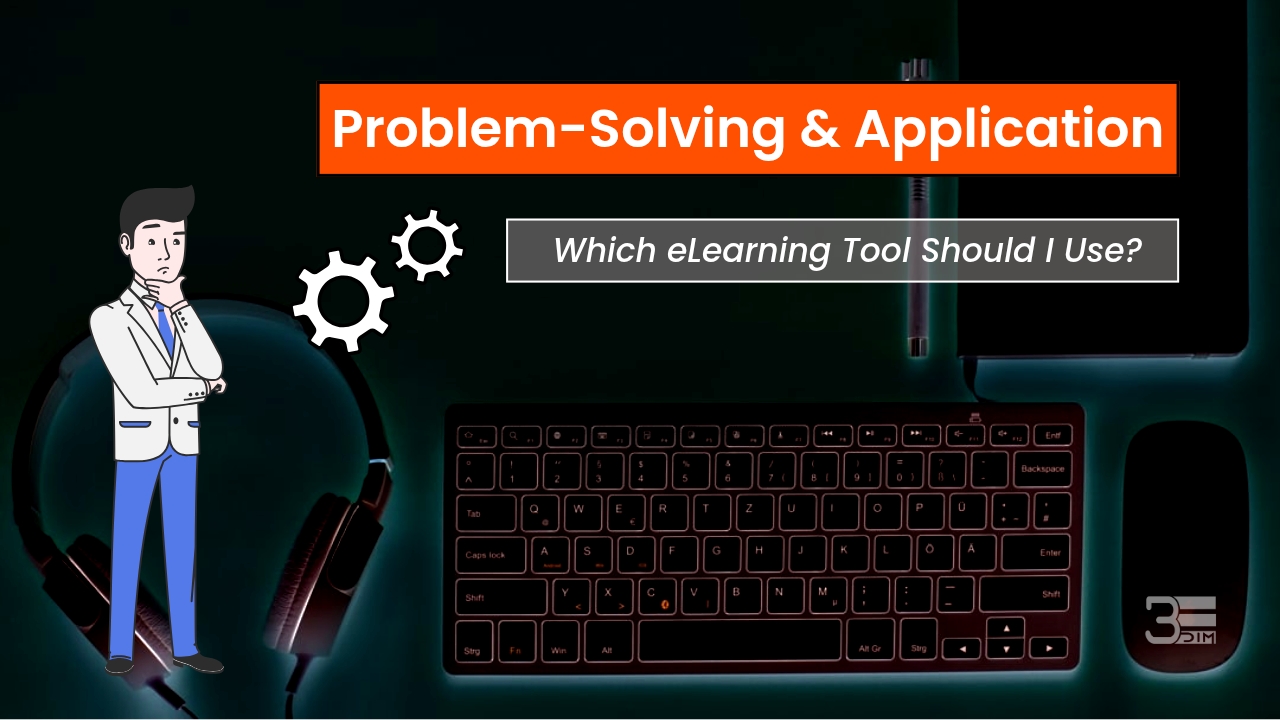Why Choosing the Right Tool Matters:
Learning doesn’t stop at understanding or memorizing, it reaches its full value when learners apply their knowledge to solve real problems. In eLearning, the right tools can transform theory into practice, helping learners bridge the gap between “knowing” and “doing.”
This section focuses on a key stage of learning: Problem-Solving & Application.
What Is Problem-Solving & Application in Learning?
Problem-solving is the ability to take knowledge, analyze a situation, and use reasoning and creativity to reach a solution. Application is about putting concepts into practice in authentic contexts.
Together, they prepare learners for real-world challenges by:
-
Encouraging critical and analytical thinking
-
Building confidence in applying knowledge to new situations
-
Developing adaptability and resilience
-
Connecting theory to practical outcomes
This stage is essential for professional training, higher education, and any skill-based learning.
Recommended Tools for Problem-Solving & Application:
🔹 Project-Based Learning Platforms
Why It Works: Learners work on complex, real-world projects that require problem-solving and decision-making.
Example: Learners design a marketing plan for a new product, applying theories of communication and strategy.
🔹 Simulations & Virtual Labs
Why It Works: Safe environments where learners can experiment, test solutions, and see results without real-world risks.
Example: Nursing students practice diagnosing and treating a virtual patient.
🔹 Case Studies & Scenarios
Why It Works: Learners analyze real or hypothetical situations, apply knowledge, and justify their reasoning.
Example: Business students review a failing company’s data and propose turnaround strategies.
🔹 Collaborative Problem-Solving Tools
Why It Works: Tools like online whiteboards, shared documents, or group forums encourage learners to solve problems together.
Example: Engineering students collaborate to design an energy-efficient building plan.
🔹 Gamified Problem-Solving Challenges
Why It Works: Games and challenges increase engagement while building resilience and adaptability.
Example: Learners solve puzzles or missions that require applying physics formulas or coding logic.
🔹 Quizzes with Application Tasks
Why It Works: Instead of recalling facts, learners use information to solve contextual problems.
Example: A quiz where learners calculate budgets, troubleshoot systems, or apply grammar in real-life sentences.
Problem-solving and application tools turn knowledge into action. Learners shift from “understanding concepts” to “using them in real situations.” They build confidence, adaptability, and the skills needed to tackle real-world challenges.
How to Use These Tools Effectively:
-
Contextualize tasks: Present problems that mirror authentic challenges in the learner’s field.
-
Encourage exploration: Allow multiple ways to solve a problem, not just one correct path.
-
Facilitate reflection: Ask learners to explain their reasoning and compare approaches.
-
Offer feedback: Provide insights into what worked, what didn’t, and why.
Problem-solving and application turn knowledge into action. By choosing the right tools, projects, simulations, cases, or gamified challenges, you empower learners to apply what they’ve learned in meaningful, practical ways.
At 3E Dim, we believe true learning happens when knowledge meets practice. Equip your learners with opportunities to solve, apply, and grow, so they can thrive beyond the classroom.
👉 Explore more in our eLearning Tools series.




